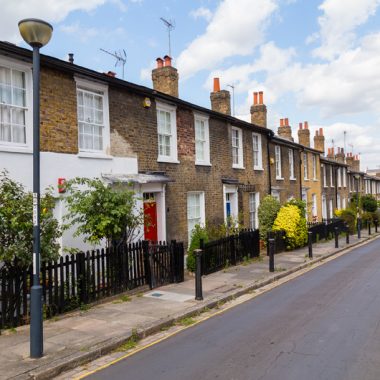January 2018 Property Investor´s Factfile
The Property Investor’s Factfile presents a range of relevant data from national / London house prices, the latest buy-to-let Limited Company (SPV) loan rates, LIBOR / SWAP rates and rentals to mortgage debt figures and information on the first-time buyer sector. Below are some noteworthy observations over the last month:
Property Market Trends
- The Halifax reported slower growth in property prices over the course of 2017 (2.7% relative to 6.5% in 2016). Managing director of Halifax Community Bank Russell Galley commented: “we expect annual price growth to continue in the range of 0-3% at the end 2018”. Galley also stated that: “prices [in 2018] are likely to be supported by the ongoing shortage of properties for sale, low levels of housebuilding, high employment and a continuation of low interest rates making mortgage servicing affordable in relative terms”;
- Similar to the Halifax, the Nationwide House Price Index pointed to average prices growing by 2.6% in 2017. At the start of January chief economist Robert Gardner said: “The fundamentals for house buyers are likely to remain challenging over the coming months with consumers’ purchasing power continuing to be squeezed by inflation running higher than earnings growth. Additionally, housing market activity is likely to be hampered by fragile consumer confidence and limited willingness to engage in major transactions.”;
- As its share price reached a record high in January 2018, Rightmove is expecting properties with two bedrooms or less to rise in price by 3% and those with three and four bedrooms to grow by 2%;
- Bearing in mind the time lag for sold properties to appear on its index, the Land Registry estimated that UK house prices grew by 5% in the 12 months preceding October 2017 – adding over £10,000 to the value of the average property;
- Other regional-specific data by Hometrack’s Cities House Price Index reported year-on-year growth (up to November 2017) in Glasgow (7.9%) and Edinburgh (7.6%). In England and Wales above-average growth was seen in Leicester (7.5%), Birmingham (7.3%), Manchester (6.6%), Nottingham (6.4%), Liverpool (6.2%), Bristol (6.1%), Leeds (5.7%), Southampton (5.4%), Portsmouth (5.1%), Cardiff (5.0%), Bournemouth (4.8%), Sheffield (4.6%), Belfast (4.5%), and Newcastle (4.0%). Over this period, property prices fell the most in Aberdeen by -3.7%;
- Land Registry data reported further decline of 3.01% in the City of Westminster and an unexpected 8.92% increase in City of London prices between September and October 2017. However, as we regularly comment, the relatively low sales volumes in these areas may skew the data somewhat. Inner London [1] and Outer London [2] fell by 1.36% and 0.08% respectively over the same period;
- See 65 expert property forecasts for 2018 by clicking here (contributors kindly delved into a range of topics from macro influences, price and rental trends to the notable demographic shifts occurring across the country, the real effects of the Universal Credit (UC) rollout, Local Housing Allowance (LHA) freezes and the widening risks of homelessness).
Rental Market Observations
- The Your Move November 2017 Buy-to-Let Index indicated that average rents are up 2.4% year-on-year in England and Wales. Rental prices in the East of England grew faster than anywhere else in the year to October;
- The most recent HomeLet Rental Index report stated that average UK rents were up by 0.7% in November 2017 relative to the same period 12 months previously (the average monthly rent stood at £904 a month). The same data reported that London rents were down by 0.2% compared to November 2016 (average monthly rents in London stood at £1,530 per month);
- For the 12 months up to December 2017, Landbay’s Rent Check reported increased rental values in Leicester (3.7%), Edinburgh City (3.5%), Isle of Anglesey (3.4%), Stirling (3.0%), Northamptonshire (2.9%), East Lothian (2.8%), Bristol (2.8%), Nottingham (2.8%), Peterborough (2.7%) and Glasgow City (2.7%). Decreased rental values were seen in Aberdeen City (-6.8%), Aberdeenshire (-4.8%), South Ayrshire (-1.9%), Windsor & Maidenhead (-1.9%), Hackney (-1.7%), Richmond-upon-Thames (-1.6%), Westminster (-1.6%), Ealing (-1.4%), East Ayrshire (-1.3%) and Kensington and Chelsea (-1.3%);
- Please see more rental data and statistics in the RENTING section (page 2) of this months factfile.
Macro-Economic Conditions for Buy-to-Let Property Investors / Traders
- UK consumer price inflation eased to 3.0% in December 2017 from 3.1% in November (where it reached its highest rate since March 2012). The core inflation rate was also down to 2.5% from 2.7%;
- Despite the Bank of England’s belief that inflation was likely to fall during the course of the year, without mentioning the UK specifically, the World Bank’s Franziska Ohnsorge warned that much of the “rich west” could see “faster than expected inflation that would mean faster than expected interest rate hikes”;
- The British Chamber of Commerce’s quartely economic survey, published at the start of 2018 reported that the economy looks set for an “underwhelming” year as businesses are “in a subdued mood ahead of Brexit”.
- Research by Cambridge Econometrics has reported that a “hard” Brexit could result in the UK losing £54 billion by 2030. The report, commissioned by Mayor of London Sadiq Khan, also suggested that 500,000 jobs could be under threat with the financial and professional services, science and technology and construction sectors being hit the most. In response to the report, the Khan warned that the country could face of lost decade of low growth and investment;
- An interesting piece of research by UK Finance indicated that mortgage arrears are at their lowest rate since 1994. Reporting that “arrears clouds have eased across the country”, there were 88,300 mortgagors behind with their payments, representing over 2.5% of the total balance. See the blog post for detailed maps including possession rates per 10,000 mortgages, negative equity levels, percentage of mortgages lent at over 4x income levels, amongst others.
Buy-to-Let Investing / Financing Conditions
- According to Research by Pantheon Macroeconomics reported that the average cost of fixed-rate mortgages rose by between 0.1% and 0.2% between September 2017 and January 2018. This may contributing to the ongoing slow down in price growth reported by most major indices (see above);
- Between the start of December 2017 and January 2018, the 1 year SWAP rate decreased by 0.021 points and the 5 year SWAP rate rose by 0.039 points;
- BM Solutions have created a useful full rental income calculator to check eligibility for buy-to-let loans prior to submitting a case. To see the results, enter the number of applicants, type, income, product rate, term length, maximum loan to value, property value, loan required and anticipated monthly rental income. Note the disclaimer that the calculations are for illustrative purposes only and do not represent a full mortgage offer;
- Some attractive buy-to-let mortgage rates in this month’s property investor’s factfile include a Barclays fixed 2.79% pay rate until the end of January 2023 with a £1,950 arrangement fee (a similar product is available without the arrangement fee, but with a high pay rate of 3.19%). The State Bank of India is also offering a 5-year SPV mortgage with a 3.24% tracker pay rate and a £937 loan fee. For more information and to discuss your specific borrowing circumstances please get in touch with paul.lowcock@bespokefinance.info or direct on 01133 203240;
- It is expected that new open banking technology – which allows for licensed competitors to directly access consumer data and interact with each other – could streamline the buy-to-let loan application process. It is believed that allowing lenders to directly access digital information (credit history, income, expenditure, LTVs, other secured / unsecured loans etc.) will remove much of the cumbersome bureaucracy. Plans are also in place to integrate price comparison websites for landlords to search appropriate mortgage products alongside other services such as insurance and accounting. Online mortgage broker Trussle are a good example of a PropTech company already making interesting strides in this space.
First-Time Buyers / Help to Buy
- Robert Gardner, Nationwide’s chief economist, indicated that a 20% deposit for a first-time buyer in London was now typically over £80,000 – approximately £30,000 more than a decade ago. The building society estimates that buyers would on average need to save for eight years to raise a deposit, rising to nearly 10 years in London;
- According to research by The Independent, over 5,500 homeowners earning above £100,000 per year have accessed Help to Buy loans, fuelling ongoing criticism that the scheme merely drives up house prices and fails to attend to real market needs. Speaking to the Independent, Polly Neate, CEO of housing charity Shelter said: “Help to Buy has completely missed the mark, barely doing anything to help the first-time buyers it is targeted at, and nothing to help those most in need of an affordable home. By inflating house prices and subsidising huge corporate pay outs it is actually making matters worse. Instead of pumping more public money into Help to Buy, the government should direct funding towards building genuinely affordable homes and intervene to lower the cost of land.”
Please feel free to follow us on Twitter and receive regular updates of relevance to property investors via our Facebook page. If you have not already, we would also encourage you to subscribe to our monthly e-bulletin (and receive our latest e-book and comprehensive buy-to-let financial calculator). Please click on the animation below for more information and to fill in your details in the “PLEASE LEAVE YOUR DETAILS HERE” box.
[1] The Land Registry classifies Inner London as constituting the following boroughs: Camden, City of London, Hackney, Hammersmith & Fulham, Haringey, Islington, Kensington and Chelsea, Lambeth, Lewisham, Newham, Southwark, Tower Hamlets, Wandsworth and Westminster.
[2] Informally referred to as the “donut” areas of London: Barking & Dagenham, Barnet, Bexley, Brent, Bromley, Croydon, Ealing, Enfield, Greenwich, Harrow, Havering, Hillingdon, Hounslow, Kingston upon Thames, Merton, Redbridge, Richmond on Thames, Sutton and Waltham Forest.










